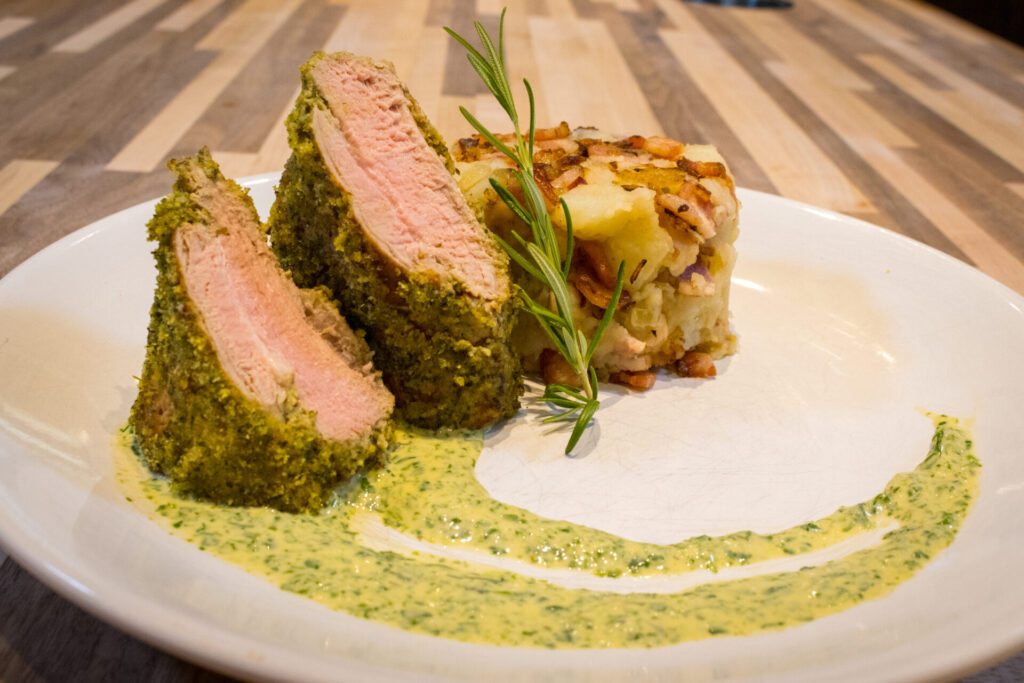Forget everything you thought you knew about pork tenderloin. This Herb-Crusted Pork Tenderloin recipe, inspired by Czech cuisine, is about to redefine your weeknight dinner game. It’s a dish that’s as visually stunning as it is delicious, perfect for impressing guests or simply treating yourself to a meal that tastes like it came from a gourmet restaurant.
What makes this Herb-Crusted Pork Tenderloin so special? It’s all about the layers of flavor. We start with a vibrant marinade that infuses the tenderloin with a zesty punch. Then, we encrust the meat in a fragrant blend of fresh herbs and breadcrumbs, creating a crispy, flavorful exterior that gives way to a juicy, tender interior.
Let’s break down the magic behind this Herb-Crusted Pork Tenderloin.
The Marinade: A Zesty Foundation
The marinade is where the flavor journey begins. A simple yet powerful blend of extra virgin olive oil, lemon juice, garlic, wholegrain mustard, salt, and pepper creates a symphony of zesty, savory notes that penetrate deep into the pork tenderloin. This marinade not only adds flavor but also helps to tenderize the meat, ensuring a melt-in-your-mouth experience.
The Herb Crust: A Symphony of Freshness
The herb crust is the star of the show. A medley of fresh herbs like sage, rosemary, parsley, chives, and oregano are blended with breadcrumbs to create a vibrant green coating that bursts with flavor. This crust not only adds a visual appeal but also infuses the pork tenderloin with an aromatic herb essence that elevates the dish to a whole new level.
The Cooking Process: A Balancing Act
The cooking process is crucial to achieving the perfect Herb-Crusted Pork Tenderloin. We start by searing the tenderloin in a hot pan to lock in the juices and create a beautiful crust. Then, we finish it in the oven to ensure that it’s cooked through evenly. The result is a tenderloin that’s juicy on the inside and crispy on the outside, with a flavor that’s both delicate and robust.
Plating: The Final Flourish
The way you plate your Herb-Crusted Pork Tenderloin can elevate the dining experience. Whether you choose to create a “tower effect” by cutting the tenderloin diagonally or slice it for serving, the presentation should be as enticing as the dish itself.
This Herb-Crusted Pork Tenderloin is a culinary masterpiece that’s surprisingly easy to make. With a little bit of effort, you can create a dish that’s worthy of a Michelin-star restaurant. So, why not impress your friends and family with this show-stopping recipe? They’ll be raving about your culinary skills for weeks to come.
Read less





Share
Click on the icons below to share "Title of the item to share"